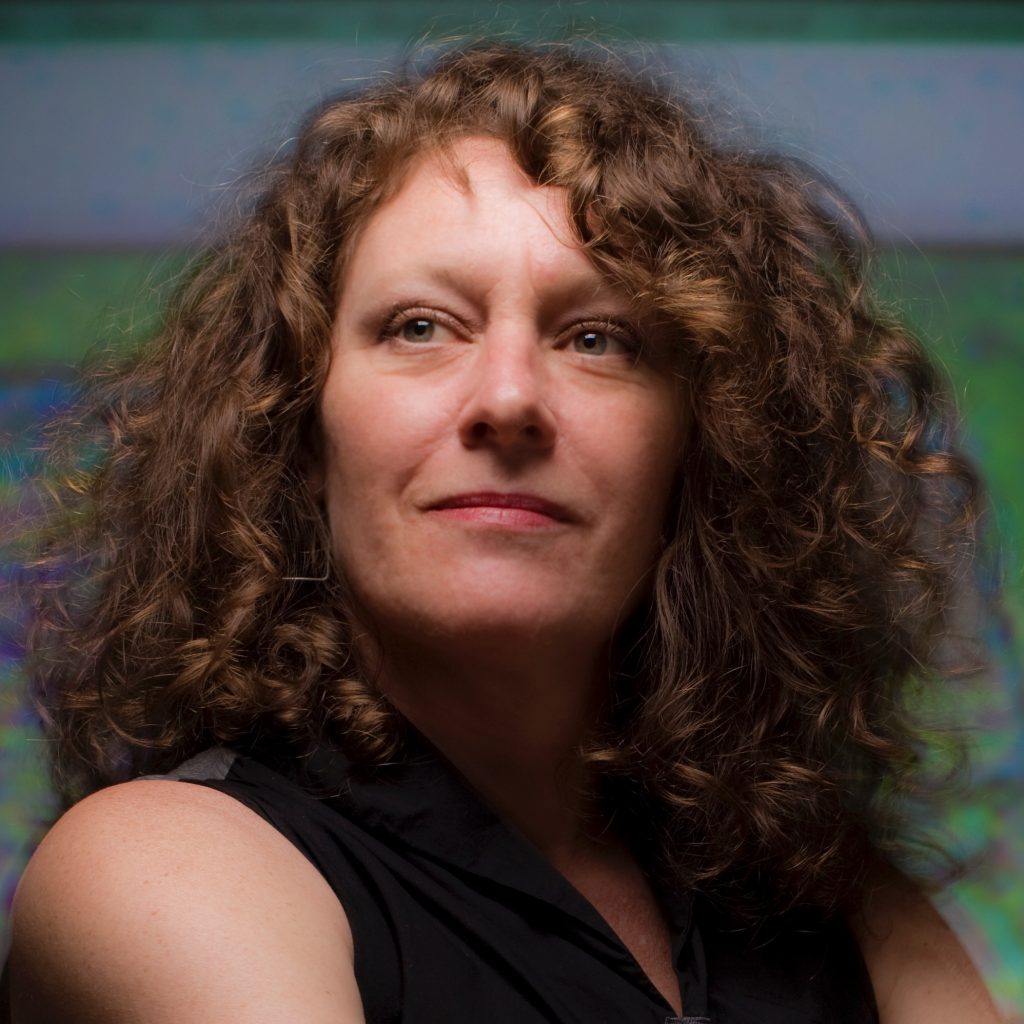New Faculty Member Dawn Stoppiello Explores Dance and the Digital Era
June 14, 2017

With both a BFA and and MFA in dance, along with years of experience in her field, Dawn Stoppiello joins the USC Kaufman faculty as Assistant Professor of Practice in Dance and New Media. Her work at Troika Ranch combines her passion for media as well as somatic practices to explore dance and its relationship to the digital era.
How would you describe your teaching style?
DS: I am casual but rigorous, playful but serious. I am hands-on, humorous and have high expectations! Like dance, working with technology requires that you get “in it” to really understand it. I believe in playing, misusing things, making mistakes to make new discoveries. I also try to empower the student to recognize what they already know about composition in dancing and dance making, and apply that to using computers and technology. I guide my student to master their tools and compose from their heart, and I also learn from my students.
You have both a BFA and an MFA in dance; do you think your experience in dance education will inform your approach to teaching at USC Kaufman?
DS: My teaching is mostly informed by my decades of working professionally at many different art institutions around the world, which taught me to think on my feet. However, having been both a BFA and MFA student myself helps me empathize with the needs of the student. I understand the hectic schedule and conditions under which the student is trying to accomplish assignments, and I also know that college provides a structure for the student that doesn’t exist in the field in the same way. In both cases, you must be disciplined, energized and self-motivated to get to your highest artistic self. I think institutional learning and “in the field” learning is the best combination.
Troika Ranch creates hybrid works based on the body’s relationship to technology. Can you tell me a little more about that, and projects like SWARM and loopdiver?
DS: In the many works Troika Ranch made before loopdiver, we were focusing on the use of responsive technology that gave the performers live control of the media that surrounded them onstage. So, in 2007 at the start of loopdiver, we decided to begin with a purely physical process. The challenge to behave in the physical world as video behaves in the digital world was exciting; the digital domain intervened directly with our creative process, with our physicality, and with our presentation. Instead of using the body to manipulate the media (digital reflection), we used the media to manipulate the body (digital intervention).
In SWARM, we hoped to combine the “digital reflection” with the “digital intervention” by tracking the movements of the audience using responsive technology, and then having that data translated into a movement score for the performers to respond to live. It’s a complicated task and we are not sure we’re finished exploring it. We made a version on students at the College of the Holy Cross in Worchester, MA in late 2015, which is the most complete experiment we’ve made so far. We hope to return to this investigation in the near future. Stay tuned!
How do your experiences with Troika Ranch inform your teaching about dance in new media?
DS: It was through Troika Ranch that I developed the theories and practices that I teach today. Troika Ranch co-founder Mark Coniglio and I made our first dance and media work while still students at CalArts in 1989. Because Mark and I were “early adopters,” we had to endlessly explain what we were doing. It was a very different landscape back then, and so the need to describe what we even meant by “new media” or “dance and technology” or “interactivity and responsive technology” forced us to be educators at every step of our creative way. It’s a different technological landscape now, but my core interest in composition over any kind of “wow” factor still drives my teaching.
What is your experience with Alexander Technique and somatic practices, and how has that changed your approach to movement in general?
DS: I have engaged in various somatic practices throughout my career: Yoga, Pilates, Release Technique, Body Mind Centering, Feldenkrais, Bartenieff, and Alexander Technique, among other forms, to keep my body strong and supple while continuing to deepen my knowledge of physical potential. Through these methods I learned about more physical layers like fascia, fluids, organs and bone and also about quality of effort. Each gave me more options to how I might approach movement. While it is a physical practice, it is primarily a way of noticing how you are being in whatever activity you are doing. So, in this regard, it affects all the activities of my life, including but not limited to, how I move.
What is the main thing you hope to impart on your students here? What are you most excited about as far as becoming part of USC Kaufman?
DS: The main thing I want to impart on each student is a personal sense of artistry along with language and confidence to defend it. I want to contribute my perspective on what it has been like to be a working artist in hopes that my stories and experiences will inspire the students to speak up and take risks. I also want to give the students ways to expand their creative use of “ubiquitous technology.” It’s not just a phone you have in your pocket; it’s a powerful media tool! I am so honored to join this diverse, dedicated and excellent faculty. I am very excited to be part of a young program, to make connections between the campus and dance in the city at large. I’m excited to move back to Los Angeles after over 20 years away. There really isn’t anything I am NOT excited about!
By Celine Kiner